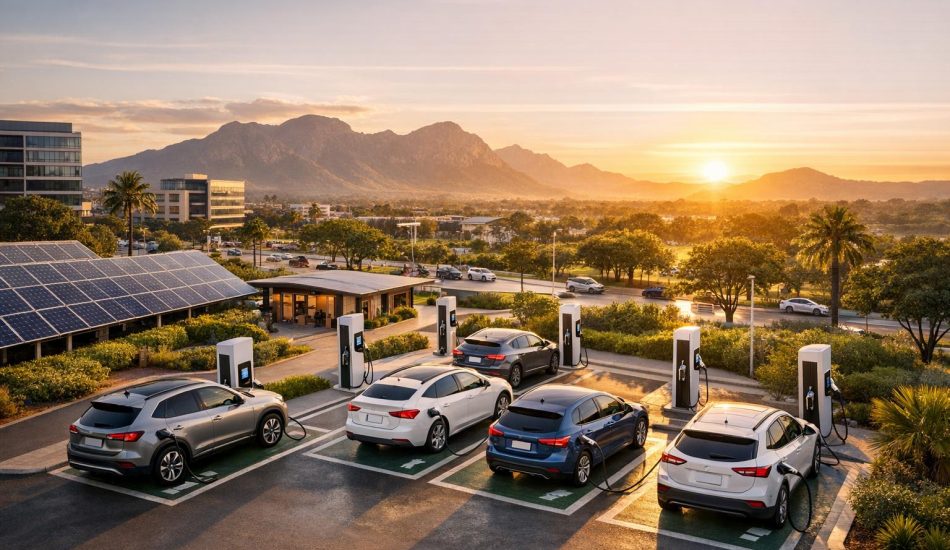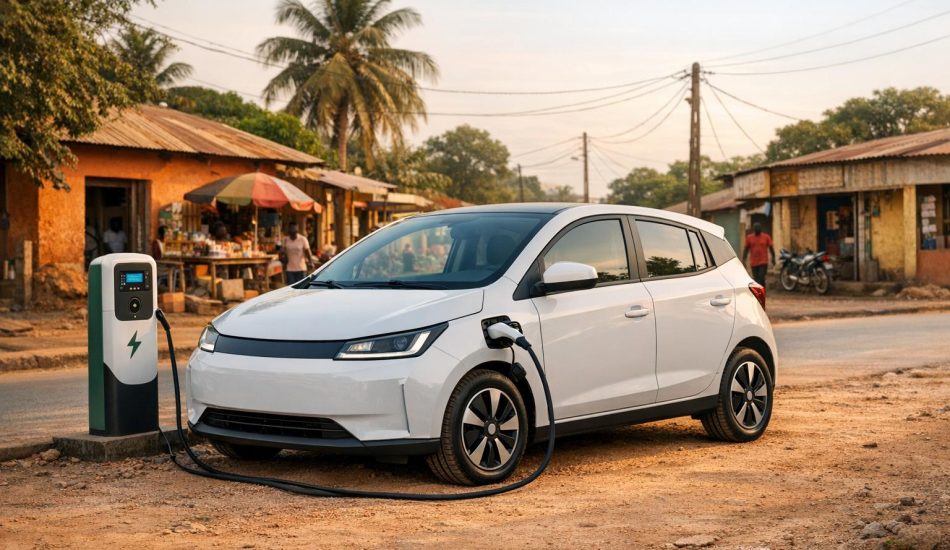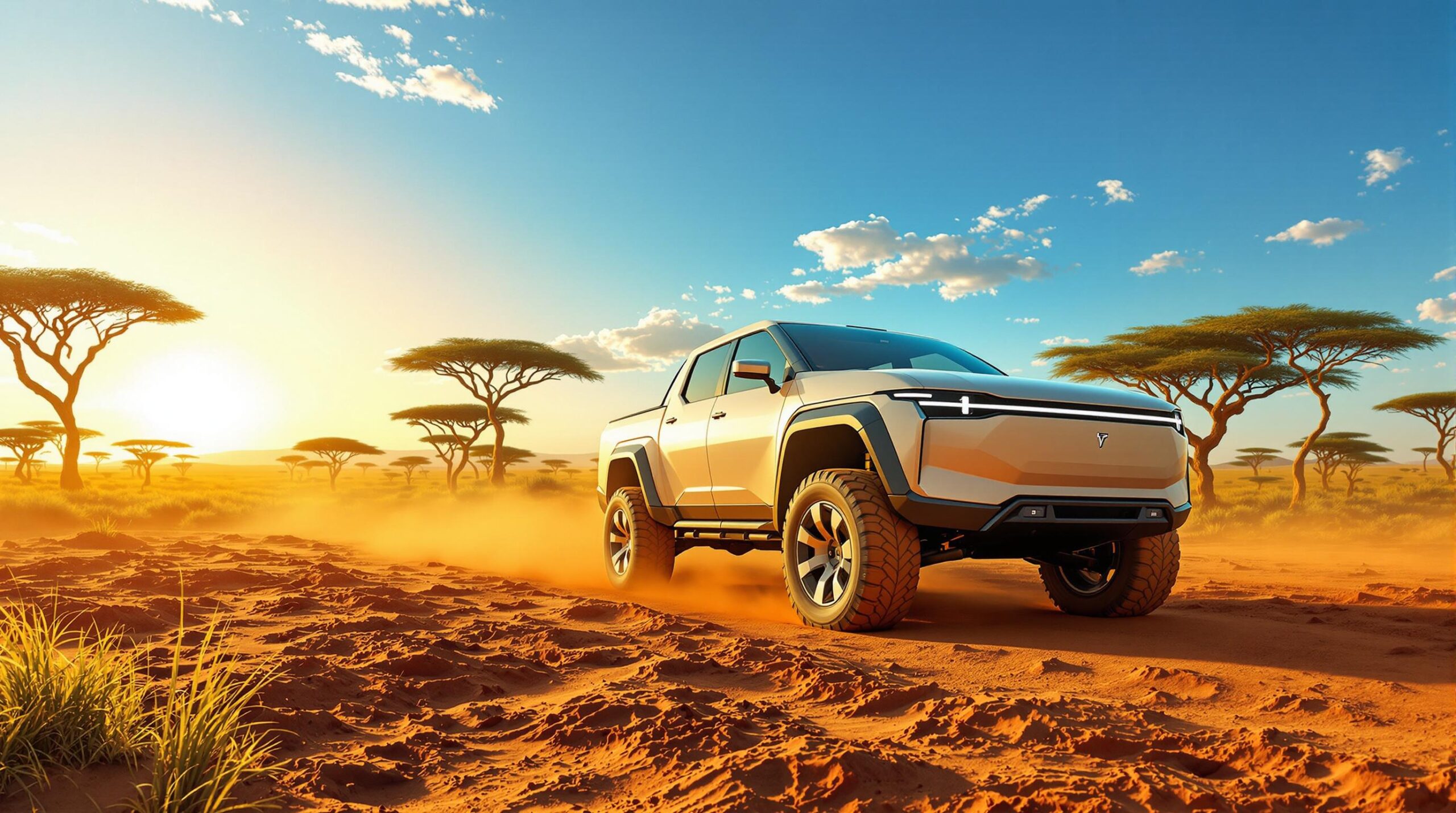
Africa’s tough roads and rising interest in eco-friendly transport make electric pickup trucks a smart choice. They offer lower running costs, better durability, and reduced emissions. Here are the top 8 electric pickups designed for Africa’s unique needs:
- Kia Tasman EV: High ground clearance, off-road modes, 3,500 kg towing capacity.
- Ford F-150 Lightning: 515 km range, mobile power source, strong towing capabilities.
- Rivian R1T: 378 mm ground clearance, 4,990 kg towing, built for conservation work.
- Chevrolet Silverado EV: 492-mile range, 12,500 lbs towing, air ride suspension.
- GMC Sierra EV: 507 miles range, 10,500 lbs towing, fast charging.
- Tesla Cybertruck: Stainless steel body, up to 550 km range, solar charging option.
- Maxus eTERRON9: 430 km range, dual motors, rugged design.
- Toyota Hilux Revo BEV: 200 km range, urban-focused, Toyota reliability.
Quick Comparison:
| Truck | Range (km) | Towing Capacity (kg) | Payload (kg) | Charging Speed | Price (USD) |
|---|---|---|---|---|---|
| Kia Tasman EV | 410 | 3,500 | N/A | N/A | TBD |
| Ford F-150 Lightning | 515 | 3,274 | N/A | Fast DC Charging | $90,000+ |
| Rivian R1T | 410 | 4,990 | 770 | Solar + Fast Charging | TBD |
| Chevrolet Silverado EV | 792 | 5,670 | 816 | 300 kW DC Fast | $57,095+ |
| GMC Sierra EV | 815 | 4,762 | 816 | 350 kW DC Fast | $91,995+ |
| Tesla Cybertruck | 550 | 5,000 | 1,134 | 137 mi/15 min | $60,990+ |
| Maxus eTERRON9 | 430 | 3,500 | 620 | 115 kW Fast (40 mins) | $81,400 |
| Toyota Hilux Revo BEV | 200 | N/A | N/A | TBD | TBD |
These trucks combine off-road capabilities, durability, and cost savings, making them ideal for Africa’s rugged terrain and growing EV market. Read on for detailed reviews and insights into each model.
Best Electric Pickup Trucks for 2024-2025
How We Picked These Trucks
We focused on four main factors to determine which trucks are best suited for African conditions: off-road capability, battery performance, durability, and operating costs.
Off-road Capability
We looked at how well each truck could handle tough terrain by examining features like ground clearance, approach and departure angles, and differential locks [3]. Electric trucks stand out with their instant torque, reduced risk of undercarriage damage, and improved water fording abilities since they don’t rely on traditional engine intakes [4].
Battery Performance
Real-world range tests in African environments showed these trucks could achieve a practical range of 410 km per charge, with energy consumption between 18–20 kWh per 100 km [5]. Beyond range, we also assessed the build quality and lifespan of each truck.
Durability and Reliability
To gauge durability, we evaluated:
- Suspension systems designed for unpaved roads
- Body mounting techniques to handle rough terrain
- Protection for batteries and electrical components
- Tires fit for various surfaces
These features ensure the trucks can handle demanding conditions while keeping maintenance needs low.
Operating Costs
Cost was a major focus. For instance, the Radar RD6 costs just $5–10 for a full charge [1]. To put this into perspective, we compared it to diesel trucks:
| Cost Factor | Electric Pickup | Diesel Pickup |
|---|---|---|
| Energy Cost per 1,200 km | $20–40 | $126–140 |
| CO₂ Emissions per 1,200 km | 0 kg | 257 kg |
| Charging/Refueling Stops | 4 stops | 1–2 stops |
Our rankings prioritized durability and operating costs, as these are critical for African conditions. Every truck we selected performed well in at least two categories, making them practical choices rather than just appealing on paper.
1. Kia Tasman EV
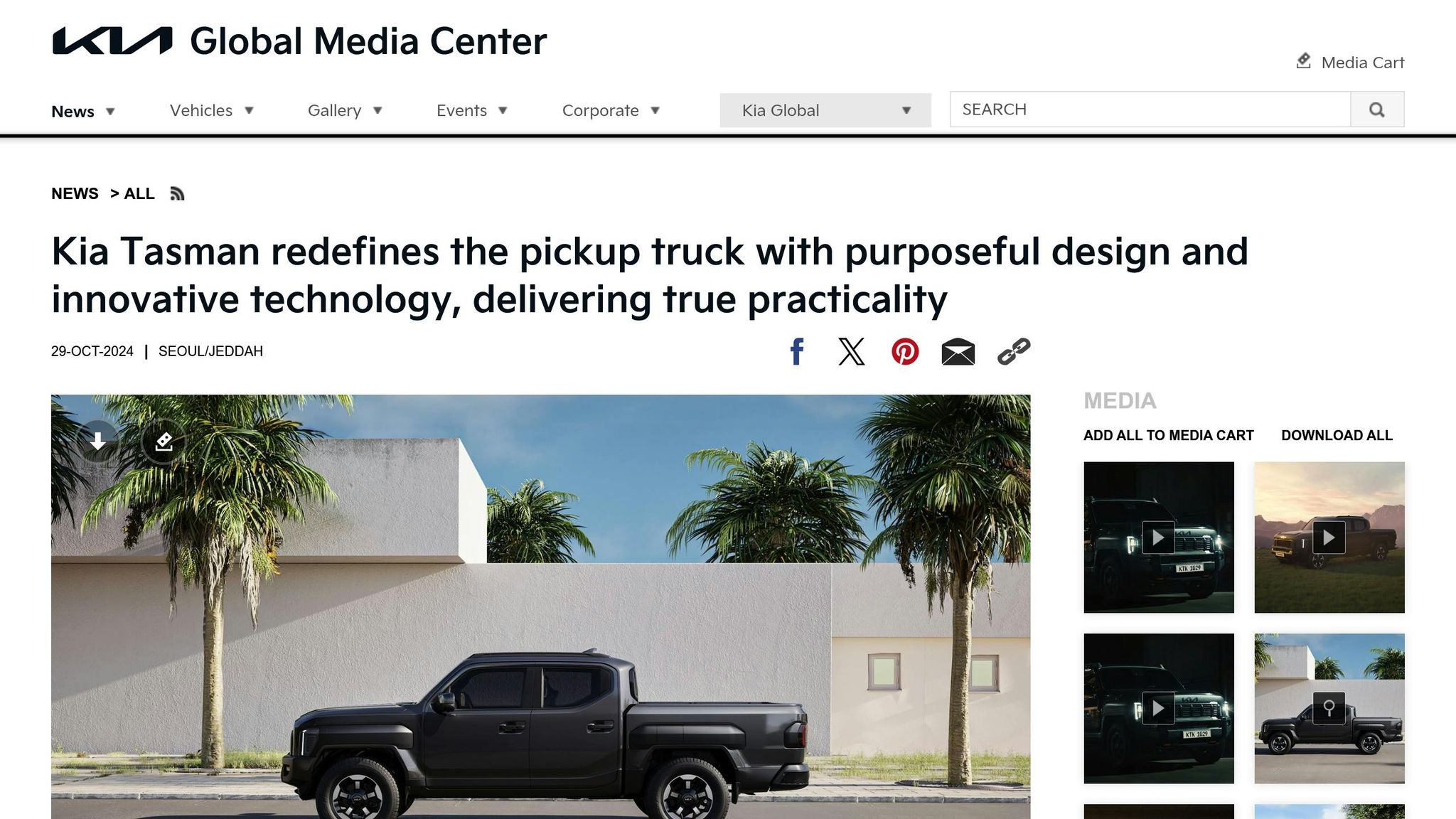
The Kia Tasman EV is built to handle Africa’s challenging landscapes. With a 252 mm ground clearance (X-Pro model), an 800 mm fording depth at 7 km/h [6], and compact dimensions (5,410 mm long, 1,930 mm wide, 1,870 mm tall [7]), it’s designed for agility and outperforms bulkier competitors.
"Kia’s first-ever pickup truck was created from the ground up to transform the market and respond to the growing preference for lifestyle-oriented trucks with advanced features" – Ho Sung Song, President and CEO at Kia [6]
Its terrain management system includes modes for Desert, Mud, Snow, and Rock, ensuring solid traction in diverse conditions. The X-Pro model adds an automatic rear Electronic Locking Differential (e-LD) and an X-Trek mode, boosting its off-road capabilities [6].
To prove its durability, Kia tested the Tasman EV in extreme environments:
| Testing Location | Environment Type | Primary Challenge |
|---|---|---|
| Swedish Tundra | Extreme Cold | Snow/Ice Performance |
| Australian Outback | Desert | Heat and Dust Resistance |
| Al Qudra, UAE | Sand Dunes | Sand Navigation |
| US/Korea | Mountain Terrain | Steep Inclines |
The Tasman EV also boasts an impressive 3,500 kg towing capacity [6]. It will debut in Korea in early 2025, with plans to enter African markets soon after [7].
For African transport operators, the electric powertrain offers major cost savings, making it a practical choice for sustainable mobility [8].
Up next, we’ll explore another model that’s redefining off-road sustainability.
2. Ford F-150 Lightning
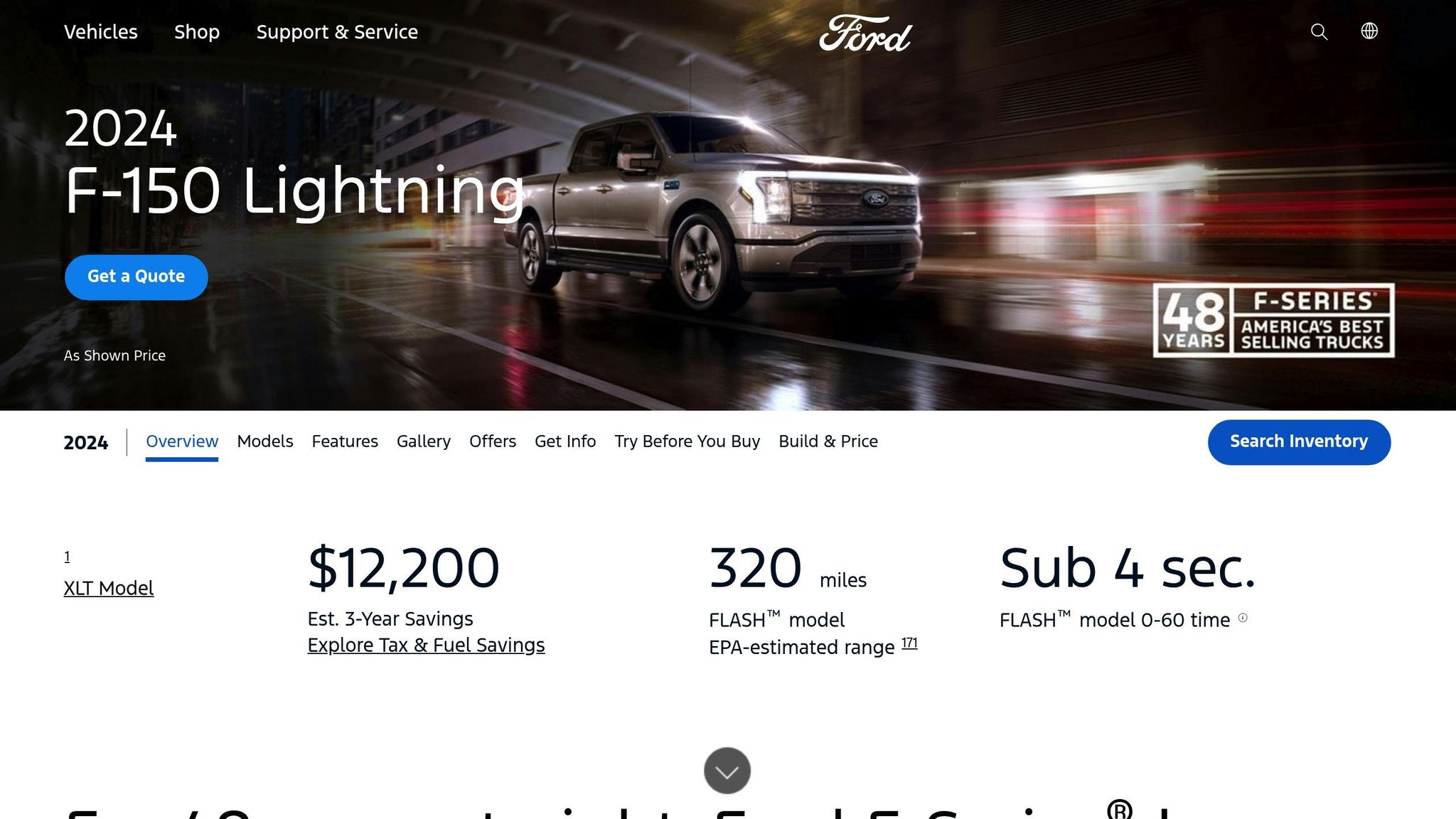
The Ford F-150 Lightning combines impressive performance with eco-friendly technology, making it a strong contender in Africa’s automotive market. With an extended-range battery offering up to 320 miles (515 km) of EPA-estimated range [11], it’s a versatile option for both city commutes and rural adventures. Here’s a closer look at what the Platinum model brings to the table.
| Feature | Specification | Why It Matters for Africa |
|---|---|---|
| Power Output | 433 kW / 1050 Nm | Handles tough terrains with ease |
| Battery Capacity | 131 kWh | Long-lasting power for remote areas |
| Range (Platinum) | 300 miles / 483 km | Ideal for longer trips between cities |
| Towing Impact | 90 miles / 140 km with 3,274 kg load | Practical for utility and transport needs |
In tests conducted by MotorTrend, the Platinum model managed 255 miles (410 km) without cargo. However, towing a 7,218-pound (3,274 kg) load at highway speeds brought the range down to 90 miles (140 km) [12]. This highlights its utility for heavy-duty tasks while maintaining respectable performance.
The F-150 Lightning also doubles as a mobile power source, a game-changer in areas with unreliable electricity [9].
"The F-150 Lightning matches the Hybrid F-250 in torque and hauling capabilities while producing zero emissions" [13]
Ford’s sustainability efforts extend beyond the vehicle itself. The Silverton Manufacturing Plant in South Africa showcases these initiatives:
- Over 30,000 solar panels generating 13.4 MW of peak power
- A battery storage system capable of powering 600 homes
- A goal of achieving 100% carbon-free electricity by 2035 [14]
These efforts align with Africa’s growing need for cleaner energy solutions and reliable infrastructure.
On top of its performance and green credentials, the F-150 Lightning offers a smooth, luxurious ride – comparable to a Range Rover – and starts at just over $90,000 for the Platinum model [10]. However, its success in Africa will likely depend on expanding charging networks and its ability to withstand the region’s unique conditions. Next, we’ll explore another model that takes off-road capabilities to the next level.
3. Rivian R1T
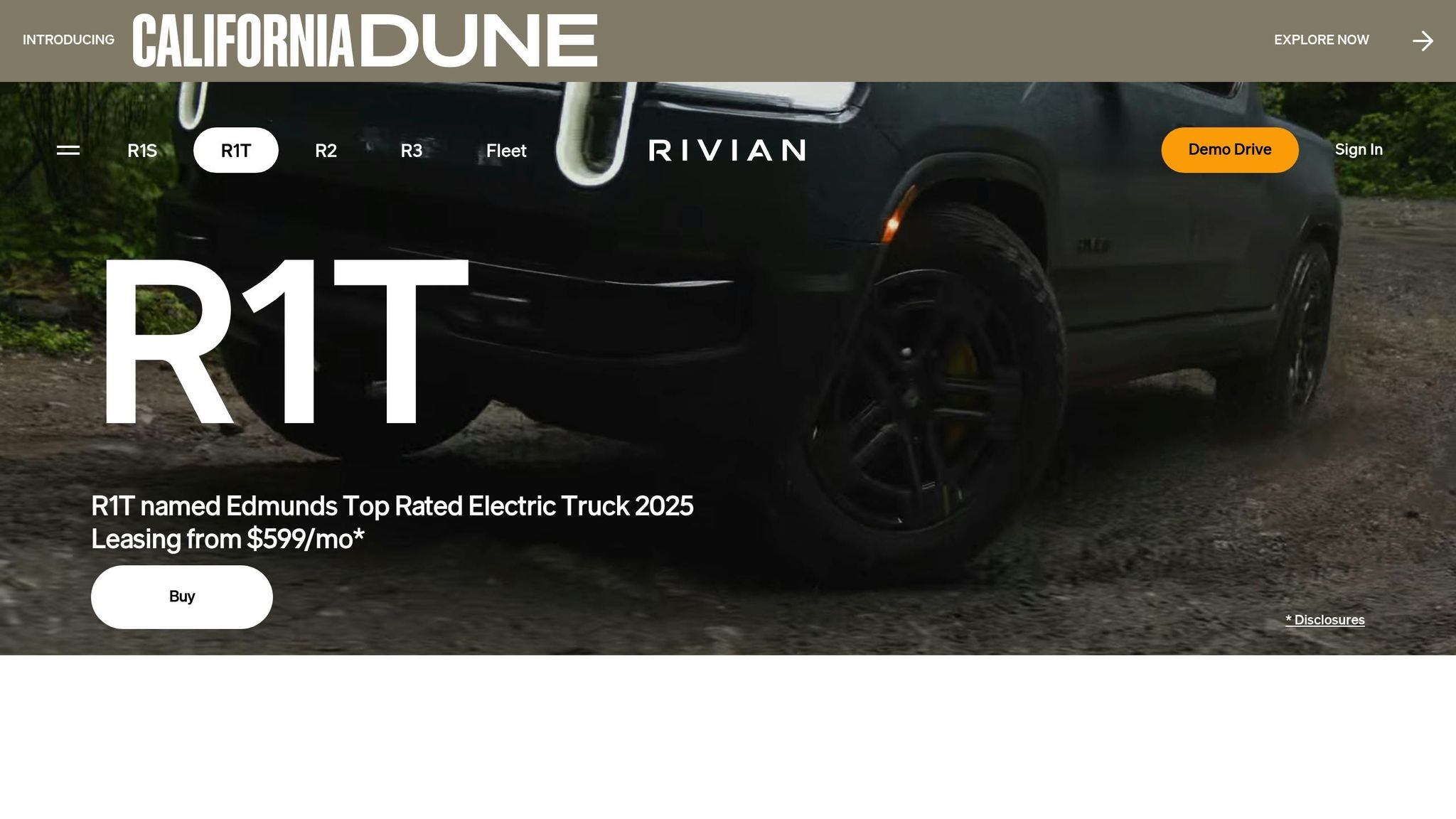
The Rivian R1T stands out as a tough electric pickup designed for Africa’s rugged landscapes. Its capabilities have been put to the test in Kenya, where the Maasai Wilderness Conservation Trust (MWCT) uses it for conservation work. Built for demanding terrains, the R1T combines performance with eco-conscious features.
| Feature | Specification | Why It Works for Africa |
|---|---|---|
| Ground Clearance | 14.9 inches (378 mm) | Handles rough terrain with ease |
| Power Output | 835 hp / 908 ft-lbs torque | Delivers the strength needed for tough conditions |
| Water Fording | 43.1 inches (1,095 mm) | Ideal for crossing flooded areas |
| Towing Capacity | 11,000 lbs (4,990 kg) | Great for hauling heavy loads |
| Payload | 1,700 lbs (770 kg) | Perfect for ranger operations |
The R1T offers multiple drive modes like All-Purpose, Sport, Conserve, Tow, and Off-Road. Within Off-Road, you’ll find sub-modes such as Rock Crawl, Soft Sand, and Rally. Its air suspension can adjust the ride height by up to 6.5 inches, making it versatile for different terrains [2].
Currently, four R1Ts are in use by MWCT in Kenya, aiding in tasks like anti-poaching patrols, transporting firefighters, and supporting rangers. Rivian has also contributed to solar charging infrastructure to power these vehicles [15][2]. This deployment highlights the R1T’s practicality and aligns with Rivian’s broader goals for eco-friendly innovation.
"Rivian believes individuals, organizations and entire industries must come together to help preserve our natural world for future generations – and few places in the world so deeply and beautifully embody what’s at stake as those under the stewardship of the Maasai Wilderness Conservation Trust." – Anisa Costa, Rivian chief sustainability officer [17]
"Diesel Land Cruisers stink, leak oil, disturb wildlife and are noisy – and all gets worse as they age. EVs do none of that" [16]
Rivian also demonstrates its commitment to environmental efforts through its 1% equity investment in the ‘Forever’ project, aimed at addressing climate change and protecting biodiversity. With features like a reinforced underbody shield and exceptional ground clearance, the R1T offers a solid alternative to diesel trucks for Africa’s challenging environments.
4. Chevrolet Silverado EV
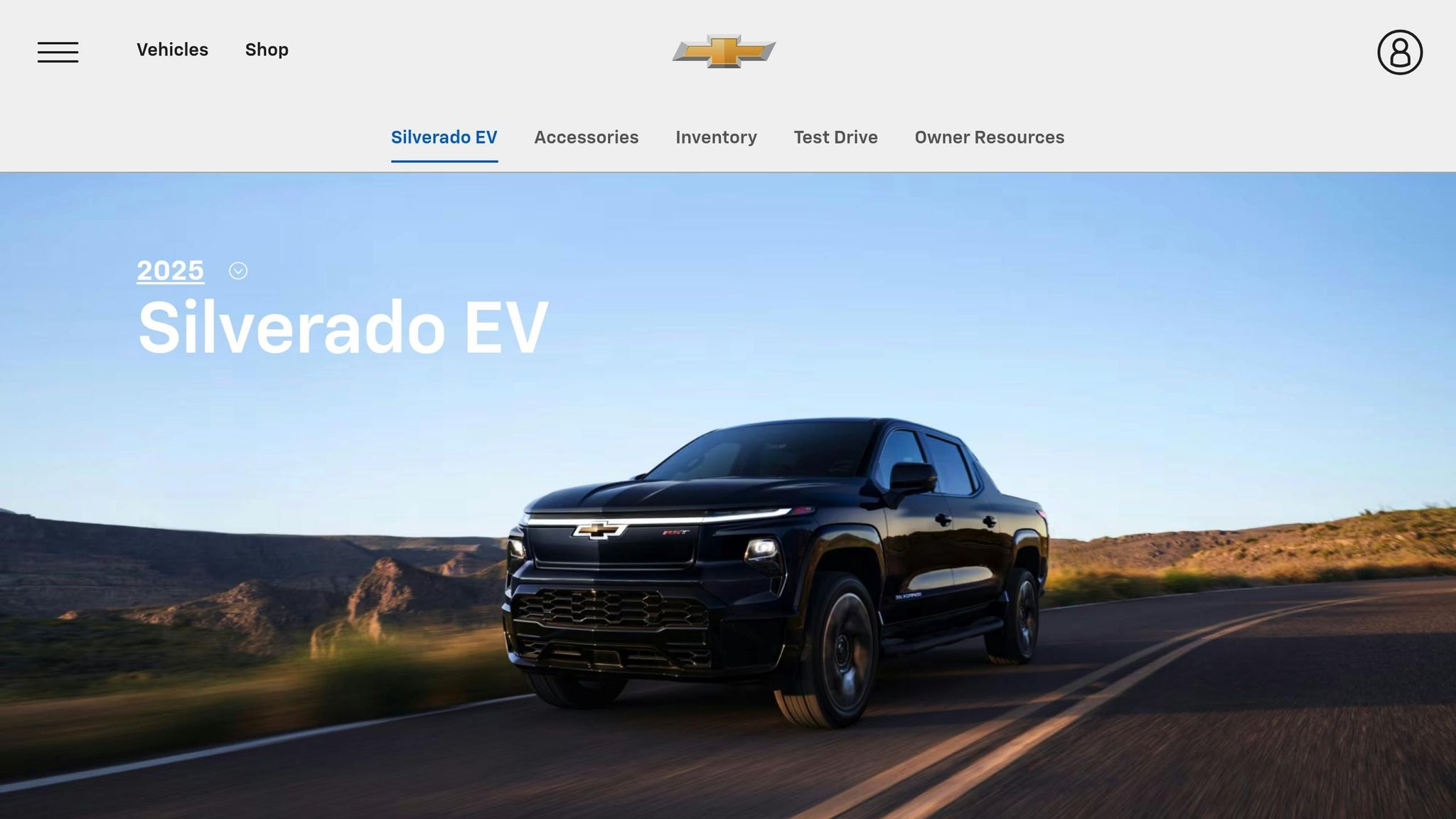
The Chevrolet Silverado EV brings both practicality and eco-friendly design to Africa’s challenging landscapes. Built on GM’s Ultium platform, this electric pickup combines impressive range and power, making it a strong contender for rugged environments.
Here’s a quick look at its standout features:
- Max Range: Up to 492 miles, ideal for long trips
- Power Output: 754 hp with 785 lb-ft of torque
- Towing Capacity: Up to 12,500 lbs
- Payload: Up to 1,800 lbs
- Charging: 300 kW DC fast charging for rapid recharges
The RST trim brings extra versatility with features like Sidewinder, a four-wheel steering system allowing diagonal movement at speeds of up to 20 mph, and an air ride suspension that adjusts the ride height by up to 2 inches [19][18].
"Truck customers tell us range is one of the main barriers to considering an EV. The 2024 Silverado EV already was the range leader, and for this new model year, we’ve set the bar even higher", said Scott Bell, vice president, Chevrolet [20].
Pricing starts at $57,095 for the Work Truck (WT) variant, while the RST trim begins at $89,395. The WT’s 492-mile range is especially useful in areas with limited charging infrastructure [19].
The RST trim also delivers serious speed, hitting 0–60 mph in just 4.1 seconds using its "Wide Open Watts" mode, powered by a battery pack of up to 205 kWh [22].
"With the Silverado nameplate, it means something to our customer base and the public. It’s a truck, regardless that it’s an EV, regardless of its structure or suspension design. We have to live up to that name. It’s a high standard, and I think we meet that standard with this truck" [21].
While the Silverado EV’s unibody design marks a shift from tradition, features like regenerative braking and advanced systems ensure it delivers the performance needed for Africa’s demanding terrain.
sbb-itb-99e19e3
5. GMC Sierra EV
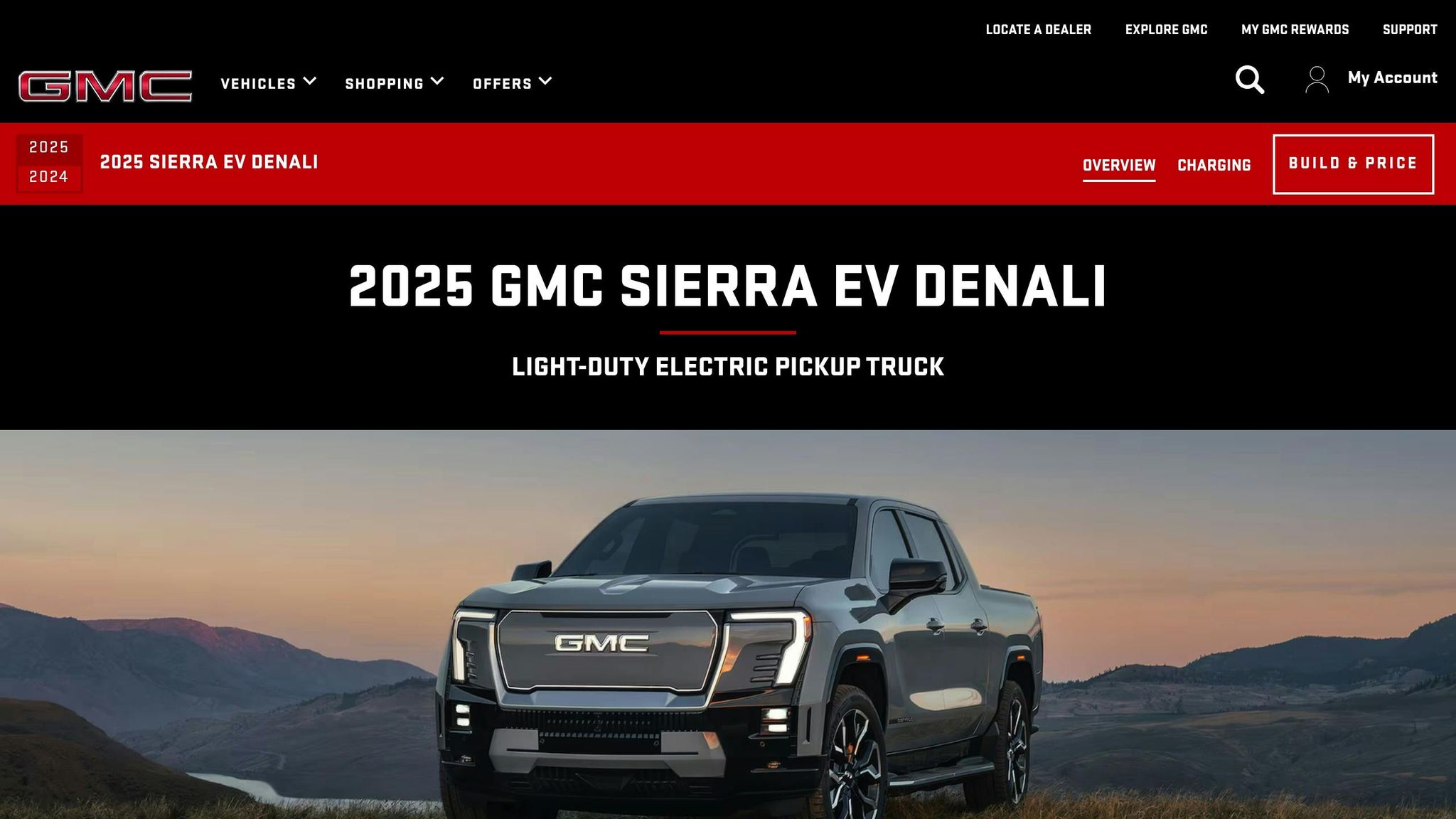
The GMC Sierra EV is built to handle Africa’s tough terrain while offering a mix of luxury and power. Its dual-motor system delivers 760 horsepower and 785 pound-feet of torque, making it a solid choice for challenging roads [26][27]. These impressive figures highlight its range and charging capabilities.
Range anxiety is a common issue in areas with limited charging options, but the Sierra EV tackles this head-on. The Max Range model achieved 507 miles in Edmunds’ real-world testing [24]. Plus, its 800-volt DC fast charging system can add 100 miles of range in just 10 minutes [25].
| Feature | Specification |
|---|---|
| Maximum Range | 507 miles (tested) |
| Towing Capacity | 10,500 pounds |
| Fast Charging | 350 kW (800V system) |
| Ground Clearance | +/- 2 inches (adjustable) |
The Air Ride Adaptive Suspension lets the vehicle adjust its height by about 2 inches, while the Crab Walk feature allows diagonal movement, making it easier to navigate tough terrain [27].
"It’s unphased by rough, undulating dirt roads, even at surprisingly high speeds." – Nico DeMattia [23]
However, with a weight of 8,987 pounds, handling on uneven surfaces can sometimes be tricky due to varying suspension responses [26][23].
For business owners and fleet operators, the Sierra EV offers practicality with its MultiPro MidGate expandable bed, which can handle loads up to 11 feet [27]. Combined with a 10,500-pound towing capacity [27], it’s a versatile option for both work and personal use.
"Offering extended driving ranges, needed towing capacity, and a host of cutting-edge features, the 2025 Sierra EV Denali is designed to meet the demands of fleets and drivers who seek both power and sustainability." – General Motors [27]
Pricing starts at $91,995 for the Extended Range model, while the Max Range version begins at $100,495 [26][27]. This makes it a compelling choice for Africa’s long-distance and rugged driving demands.
Next, we dive into more advancements in sustainable pickup solutions.
6. Tesla Cybertruck
The Tesla Cybertruck stands out with its futuristic design and ultra-hard stainless-steel exoskeleton, designed to resist dents, damage, and corrosion – perfect for tough environments like those in Africa [28]. With an impressive towing capacity of 11,000 pounds and a payload capacity of 2,500 pounds, it’s built for heavy-duty tasks. Its shatter-resistant armor glass can even handle impacts from class 4 hail [28].
Here’s a breakdown of the key specifications for each model:
| Model | Range | Charging Speed | Price (USD) |
|---|---|---|---|
| Rear-wheel drive | 250 mi (400 km) | Up to 137 mi/15 min | $60,990 |
| All-wheel drive | 340 mi (550 km) | Up to 137 mi/15 min | $79,990 |
| Cyberbeast | 320 mi (510 km) | Up to 137 mi/15 min | $99,990 |
The all-wheel drive model provides a range of 340 miles, which can be extended to 440–470 miles with an optional range extender [29]. For regions with limited charging access, the solar sunroof adds up to 25 km of range daily [30].
The Cybertruck also features advanced power management. Its vehicle-to-load system delivers 9.6 kW through five outlets [29]. Additionally, integrated 120V and 240V outlets can power tools or even charge other EVs, offering up to 11.5 kW during power outages [28].
"This is the type of vehicle Africa needs. Affordable, tough, self charging and fit for purpose." – Munyaradzi Jani [30]
The truck includes 67 cubic feet of lockable storage [28] and can gain 137 miles of range in just 15 minutes using Tesla’s Supercharging system [28]. Starting at $60,990, the Cybertruck combines durability, range, and practicality, making it a smart choice for African markets [29].
7. Maxus eTERRON9
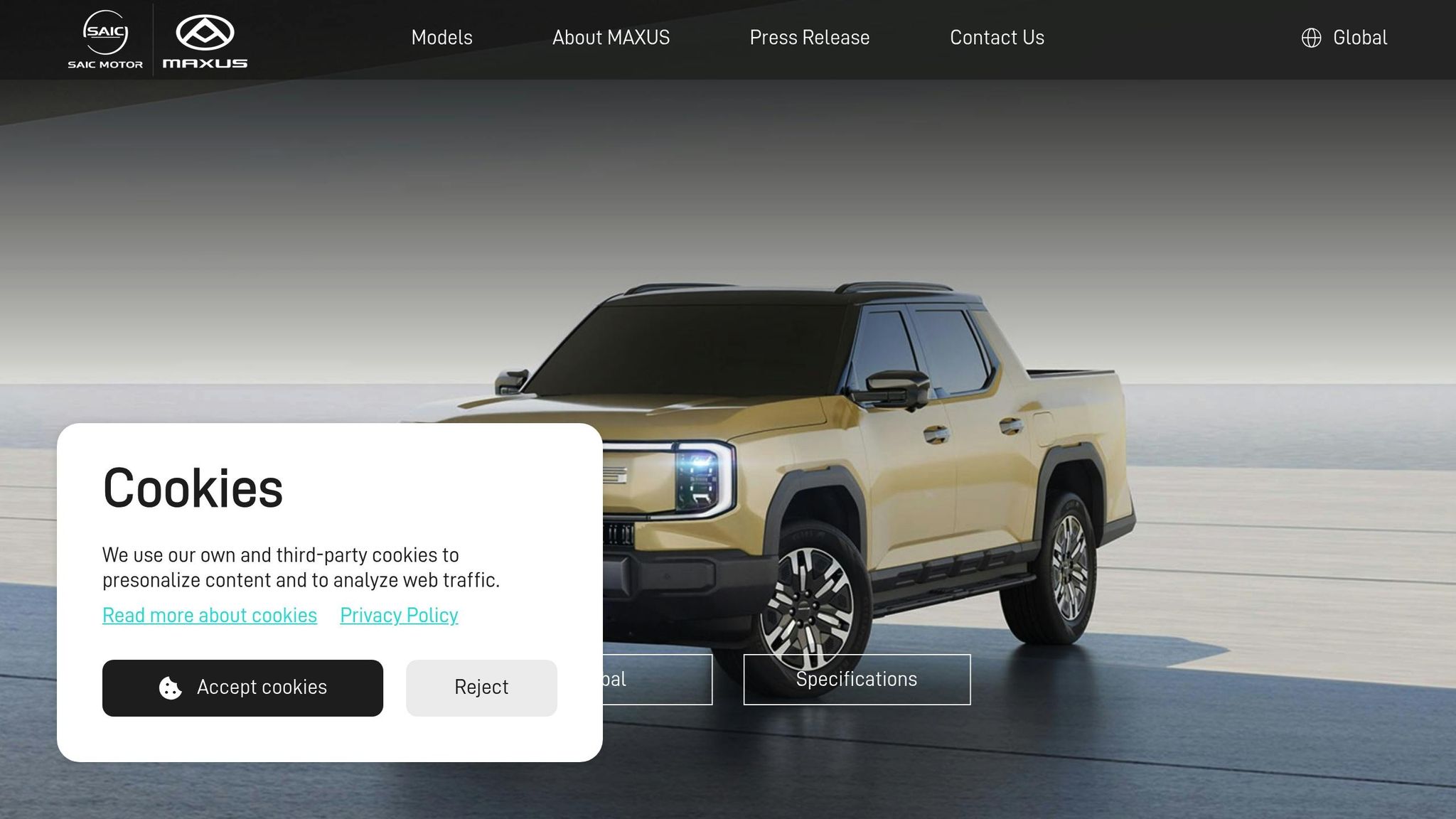
The Maxus eTERRON9 stands out in Africa’s electric pickup market with its dual-motor system delivering 325 kW (442 hp) and an all-wheel-drive setup. Thanks to its All-Terrain System (ATS), it handles Africa’s varied landscapes with ease [33].
Built with 73% ultra-high-strength steel in a semi-monocoque design, the eTERRON9 is engineered for durability [33]. Paired with adaptive air suspension, it provides stability and performance across challenging terrains.
Here are the key specifications:
| Feature | Specification |
|---|---|
| Range | 430 km (WLTP) |
| Battery Capacity | 102 kWh |
| Fast Charging (20-80%) | 40 minutes at 115 kW |
| Towing Capacity | 3.5 tons |
| Payload | 620 kg |
With over 400 driving mode configurations, including options for mud and sand, it’s built for versatility [31]. The Vehicle-to-Load (V2L) function includes multiple 2.2 kW sockets and a 6.6 kW external connection, making it a reliable power source in areas with unstable electricity [34].
The advanced battery system features a 9-channel ventilation setup, boosting winter range by 18% compared to standard EVs [33].
At €72,900 ($81,400 USD) [32], the eTERRON9 is positioned as a premium choice in the electric pickup category. Its rugged build and versatile features cater to markets where reliability and adaptability are crucial. Next, we’ll take a closer look at the Toyota Hilux Revo BEV.
8. Toyota Hilux Revo BEV
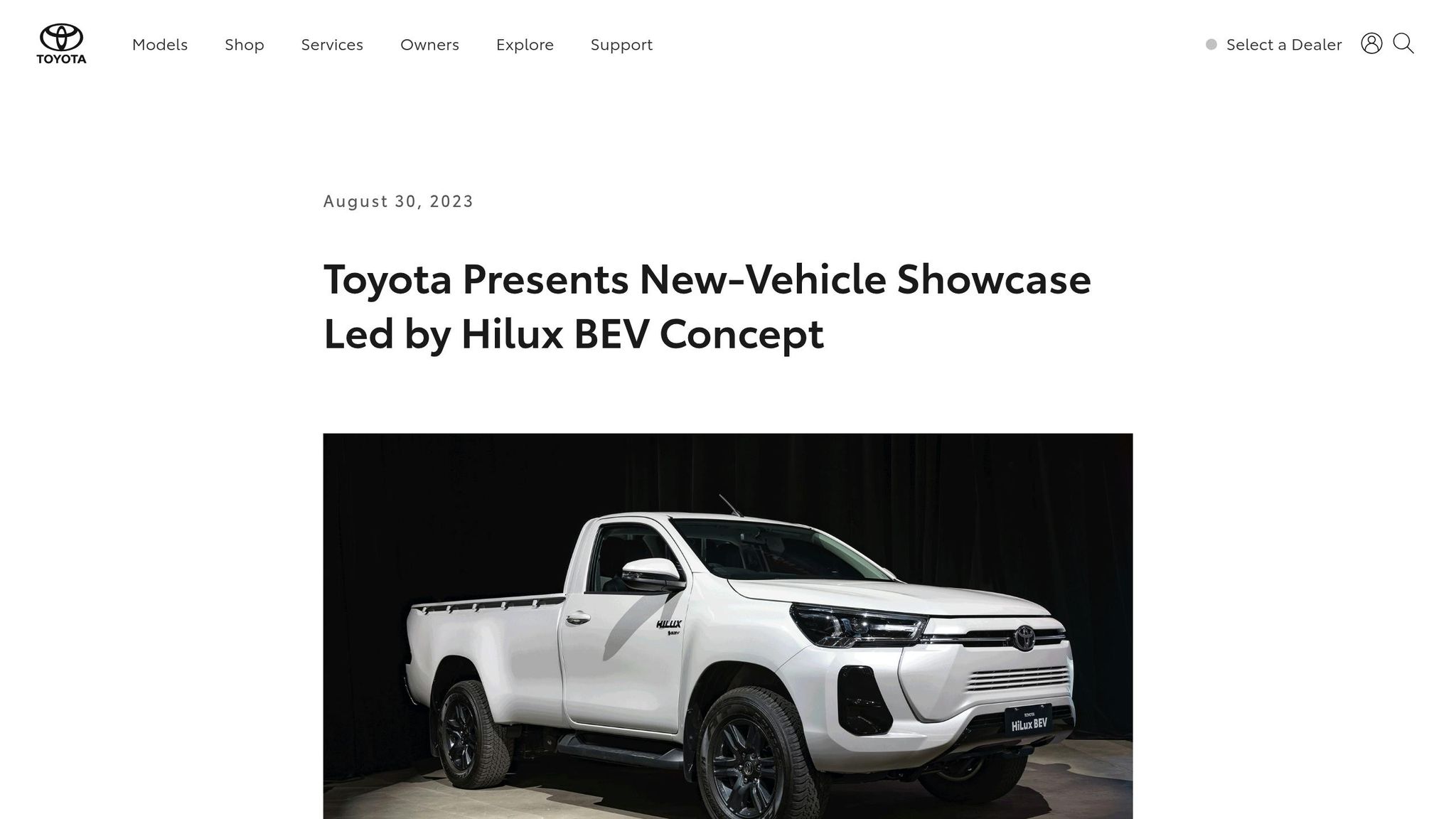
The Toyota Hilux Revo BEV marks Toyota’s entry into the electric pickup market, combining trusted performance with a shift toward electric mobility. Based on the Thai-market HiLux single-cab long tub 4×2 model, this concept retains the Hilux’s well-known reliability while introducing an all-electric powertrain.
The electric drivetrain provides torque similar to a diesel engine, offering a smooth and refined driving experience. A floor-mounted battery improves the vehicle’s balance by lowering the center of gravity, which enhances ride quality [35].
Here’s a quick look at its specifications:
| Feature | Specification |
|---|---|
| Projected Range | 200 kilometers |
| Acceleration (0–100 km/h) | 12–13 seconds |
| Drive Configuration | 4×2 (Two-wheel drive) |
| Expected Production Start | End of 2025 |
| Primary Use Case | Urban and short-range logistics |
The Hilux Revo BEV carries forward the trusted reputation of the Hilux, a name that resonates strongly across Africa. Sean Hanley, Toyota Australia’s vice president for sales and marketing, highlighted:
"It’s a strong indicator of Toyota’s determination to overcome the challenges of electrifying our commercial vehicles, ensuring there are multiple options that can meet the expectations of end users" [35].
Pras Ganesh, Executive Vice President of Toyota Motor Asia, pointed out the trade-offs in EV design:
"More range means extra battery weight, reducing payload capacity" [37][38].
The vehicle’s success isn’t just about performance – it’s also about market readiness. Toyota’s extensive service network across Africa ensures that owners will have access to support and spare parts when they need them [36]. Additionally, Toyota is working on solid-state battery technology to meet the expectations of current HiLux owners while maintaining the benefits of an electric drivetrain [35].
With Breev planning to expand EV charging infrastructure across African towns [39], the Hilux Revo BEV’s practicality will increase as charging options improve. This combination of service accessibility and advancements in battery technology addresses some of the key challenges in electrifying Africa’s commercial vehicles.
EV Charging Stations in Africa
Building a dependable charging network is crucial to support Africa’s electric pickups and long-distance travel needs. Across the continent, electric vehicle (EV) charging infrastructure is steadily growing, with key advancements in countries like South Africa, Kenya, and Egypt.
South Africa is leading the charge with over 350 GridCars charging points and CHARGE’s first off-grid ultra-fast charging station in Wolmaransstad. This station, powered by renewable energy, includes six DC and two AC charging points [42][44].
Charging Network Highlights Across Africa
Here’s a quick look at how charging networks are developing in some of Africa’s top EV markets:
| Country | Charging Network Score | Key Developments |
|---|---|---|
| South Africa | 0.80 | 350+ GridCars points, CHARGE network growth |
| Morocco | 0.85 | Expanding urban charging infrastructure |
| Egypt | 0.74 | 135 stations with 500+ charging points |
| Kenya | 0.70 | $1.9M invested in new charging stations |
Kenya’s efforts stand out with a $1.9 million investment over three years to build new charging stations. The updated 2024 National Building Code now requires commercial buildings to dedicate 5% of their parking spaces for EV charging [40].
"We are thrilled to be officially opening our first off‑grid charging station, which marks a significant milestone in South Africa’s transition to EVs and a carbon‑free future. This has been a three year journey, highlighting our commitment to making our off‑grid network a reality as we believe it will benefit South Africans in multiple ways." [42][46]
Policies Supporting EV Growth
Several African nations are adopting policies to encourage EV infrastructure:
- Rwanda: Provides rent-free land for charging stations [40][43].
- Tunisia: Reduced custom duties on charging equipment to 10% [40][43].
- Uganda: Introduced special electricity tariffs for charging stations [40][43].
- Ghana: Plans to establish 200 charging stations [40].
Despite these efforts, only 17% of African countries currently have 10 or more public charging stations [41]. However, projections indicate South Africa could have 120,000 EVs by 2027 and 360,000 by 2030 [40], showing strong momentum toward EV adoption.
To ensure reliable access for long-distance and commercial travel, Zero Carbon Charge aims to install charging stations every 150 kilometers along key routes by 2026 [45]. This initiative is critical for enabling electric trucks to navigate Africa’s rugged terrains with confidence.
Final Thoughts
Our in-depth truck reviews and the growing network of charging stations highlight the potential of electric pickups in Africa. Replacing a traditional pickup with an electric one can save 74 tonnes of CO2e over its lifetime. That’s the same as cutting emissions from driving a conventional car for 304,580 kilometers [47].
While electric vehicles (EVs) come with higher upfront costs compared to internal combustion engine (ICE) vehicles, they offer long-term savings through lower operating costs, reduced maintenance, and no risk of fuel theft [49]. These benefits, combined with expanding charging options, make them a practical choice for Africa’s unique transportation needs.
Energy expert Jessika Trancik puts it plainly:
"A shift to an electric vehicle is one of the single most impactful decisions that someone can make if they want to reduce their own emissions." [47]
Electric pickups also excel in energy efficiency, converting nearly 80% of energy into motion, far outperforming traditional vehicles [50]. This makes them particularly effective in urban areas with frequent stop-and-start traffic.
As charging infrastructure continues to grow, concerns about range are being addressed. With transport emissions in Africa increasing by 7% annually [48], electric pickups offer a practical way to tackle environmental challenges while improving operational efficiency.
For industries like agriculture and conservation, where pickup trucks are essential, switching to electric models significantly reduces emissions without compromising the rugged performance needed for Africa’s tough terrain. In 2021 alone, over 20 startups in this space secured more than $25 million in funding [48], signaling strong momentum. This combination of performance, reliability, and reduced emissions underscores the market’s readiness for a major shift in sustainable transportation.



